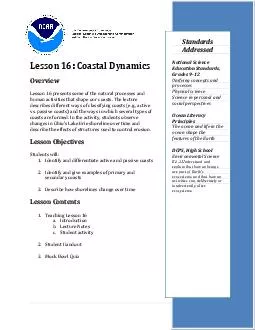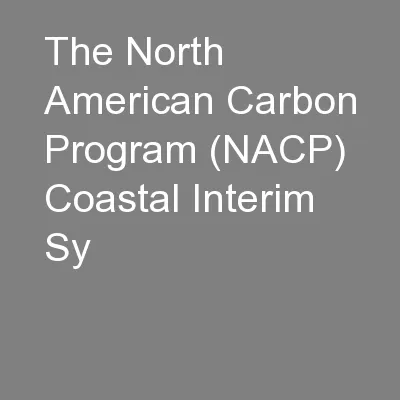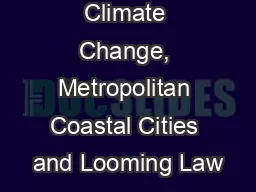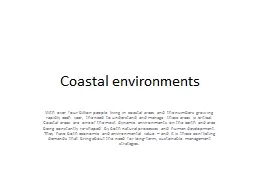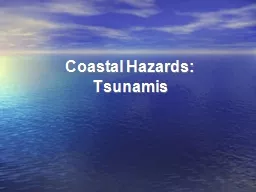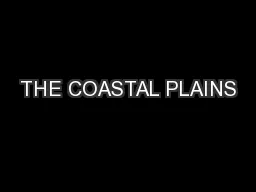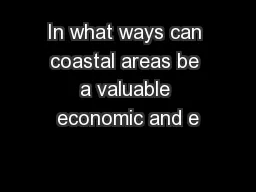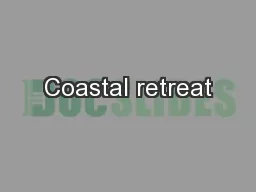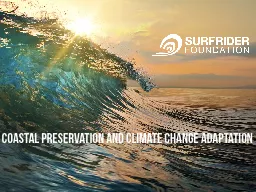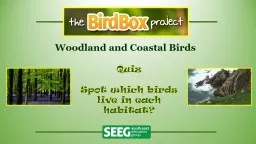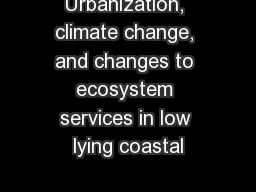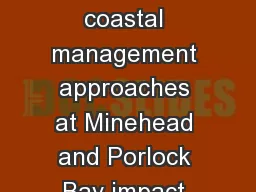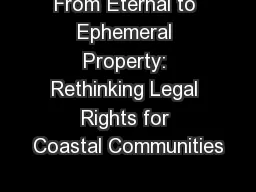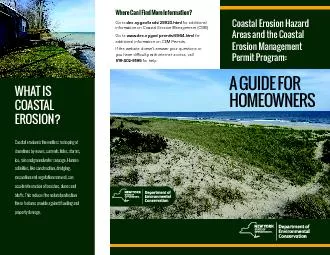PDF-Lesson 16: Coastal Dynamics
Author : min-jolicoeur | Published Date : 2016-11-01
1 Page Overview Lesson 16 presents some of the natural processes and human activities that shape our coasts The lecture describes different ways of classifying
Presentation Embed Code
Download Presentation
Download Presentation The PPT/PDF document "Lesson 16: Coastal Dynamics" is the property of its rightful owner. Permission is granted to download and print the materials on this website for personal, non-commercial use only, and to display it on your personal computer provided you do not modify the materials and that you retain all copyright notices contained in the materials. By downloading content from our website, you accept the terms of this agreement.
Lesson 16: Coastal Dynamics: Transcript
Download Rules Of Document
"Lesson 16: Coastal Dynamics"The content belongs to its owner. You may download and print it for personal use, without modification, and keep all copyright notices. By downloading, you agree to these terms.
Related Documents

